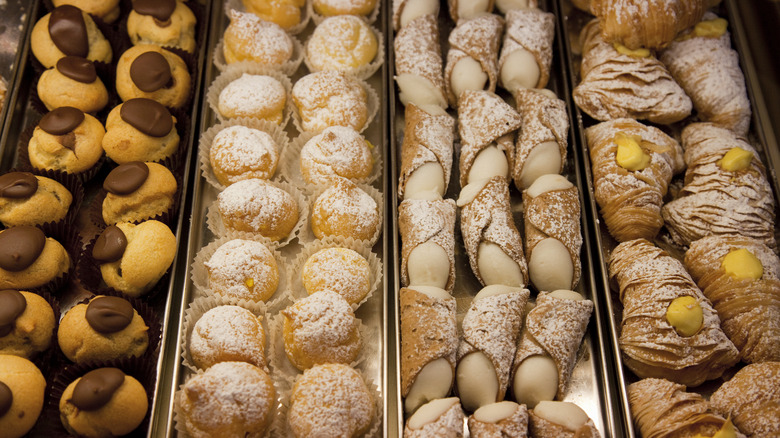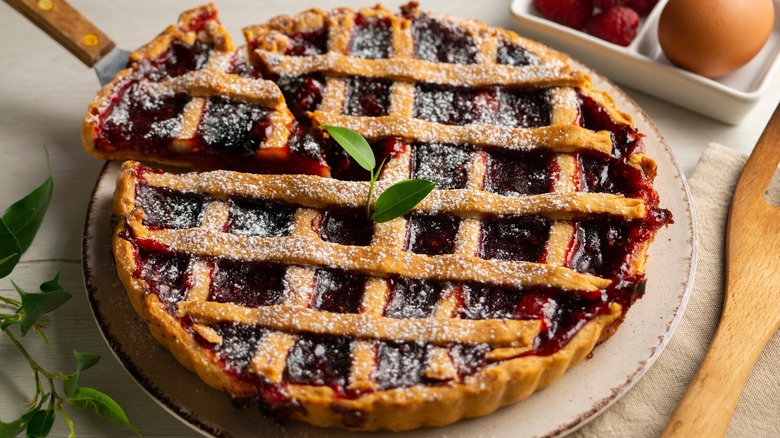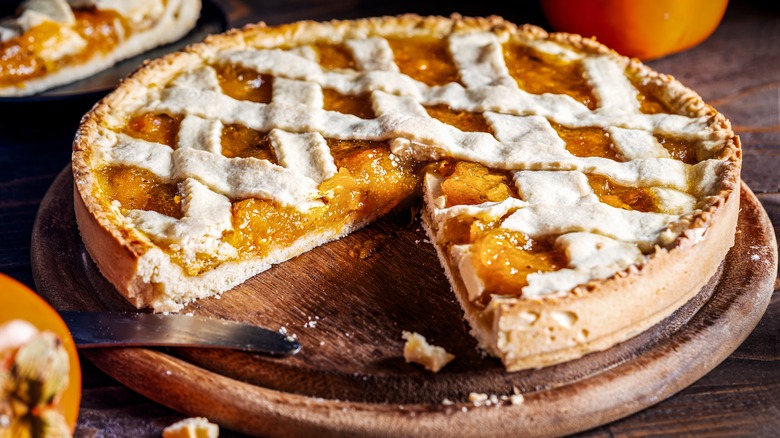The Traditional Italian Dessert That Came Well Before Tiramisu
When it comes to Italian desserts, tiramisu often steals the spotlight with its rich layers of coffee-soaked ladyfingers and mascarpone cream. But long before tiramisu's rise to global fame, there was a dessert steeped in history and simplicity, another beloved treat gracing Italian tables: the crostata. A rustic, unpretentious dessert with a history as rich as its buttery crust, the crostata has been a symbol of Italian home baking for centuries. Unlike the modern complexity of tiramisu, the crostata thrives on simplicity, blending a crumbly crust with fruit preserves or creamy fillings. Whether served during a casual family dinner or as the grand finale of a feast, this timeless dessert continues to delight with its versatility and charm.
The crostata isn't just about flavor, it's a cultural artifact that embodies Italian culinary traditions. Much like other Italian staples like piadina, it highlights how even the simplest ingredients can create something memorable. Its rustic lattice top and golden-brown edges are a visual treat, making it as beautiful as it is delicious. If you're curious about this unsung hero of Italian desserts, buckle up for a journey through history, pastry, and maybe even your own kitchen.
Crostata: the humble ancestor of Italian desserts
The crostata's origins trace back to Ancient Rome, making it one of Italy's oldest desserts. Early versions were baked with flour, water, and a sweetener like honey; a far cry from the rich, buttery pastry we know today. Over time, the crostata evolved into a staple of Italian cuisine, embracing regional ingredients and seasonal fruits. In many ways, it set the stage for modern Italian desserts, offering a template for simplicity and adaptability.
What makes the crostata truly special is its versatility. While fruit preserves like apricot or cherry are classic fillings, variations abound. Custards, ricotta, and even savory ingredients — like those featured in onion crostatas — prove that this dessert is as flexible as desserts get. Its signature lattice crust not only adds visual appeal but also allows the filling to bubble and caramelize during baking, creating an irresistible aroma.
In many Italian households, the crostata is a rite of passage for home bakers, cherished for its simplicity and its ability to use up pantry staples. This dessert embodies the Italian philosophy of cucina povera — making the most out of humble ingredients to create something extraordinary. And while tiramisu might dominate café menus today, the crostata remains a nostalgic favorite, a bridge to Italy's culinary roots.
Making a crostata at home
The beauty of a crostata lies in its simplicity which means making one at home doesn't require advanced pastry skills. Start with a basic dough made from flour, butter, sugar, and eggs rolled out and pressed into a tart pan. Fill it with your choice of jam, custard, or ricotta sweetened with a bit of sugar and lemon zest. To achieve the iconic lattice top, cut strips of dough and weave them over the filling. A quick egg wash ensures a golden finish in the oven.
Bake at 350 degrees Fahrenheit for 35 to 40 minutes or until the crust is golden brown and the filling is bubbling. Serve warm or at room temperature, perhaps with a dollop of whipped cream or a sprinkle of powdered sugar for extra flair. Whether you're indulging in its sweet simplicity or experimenting with savory twists, the crostata proves that the oldest recipes are often the best. So, next time you're looking for a tiramisu alternative, try a crostata, it'll change your dessert table for good.


